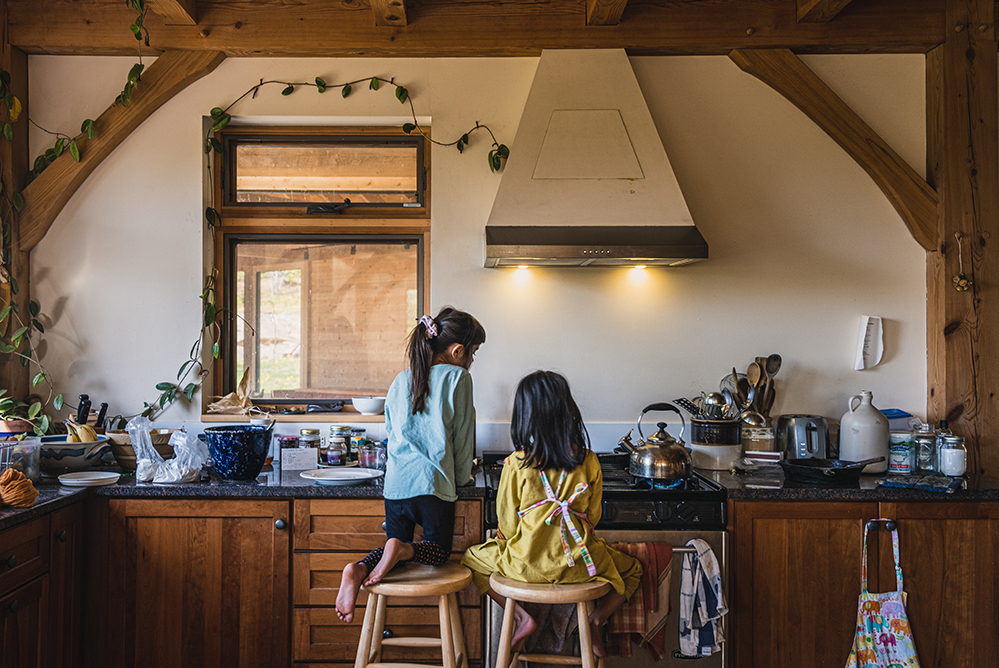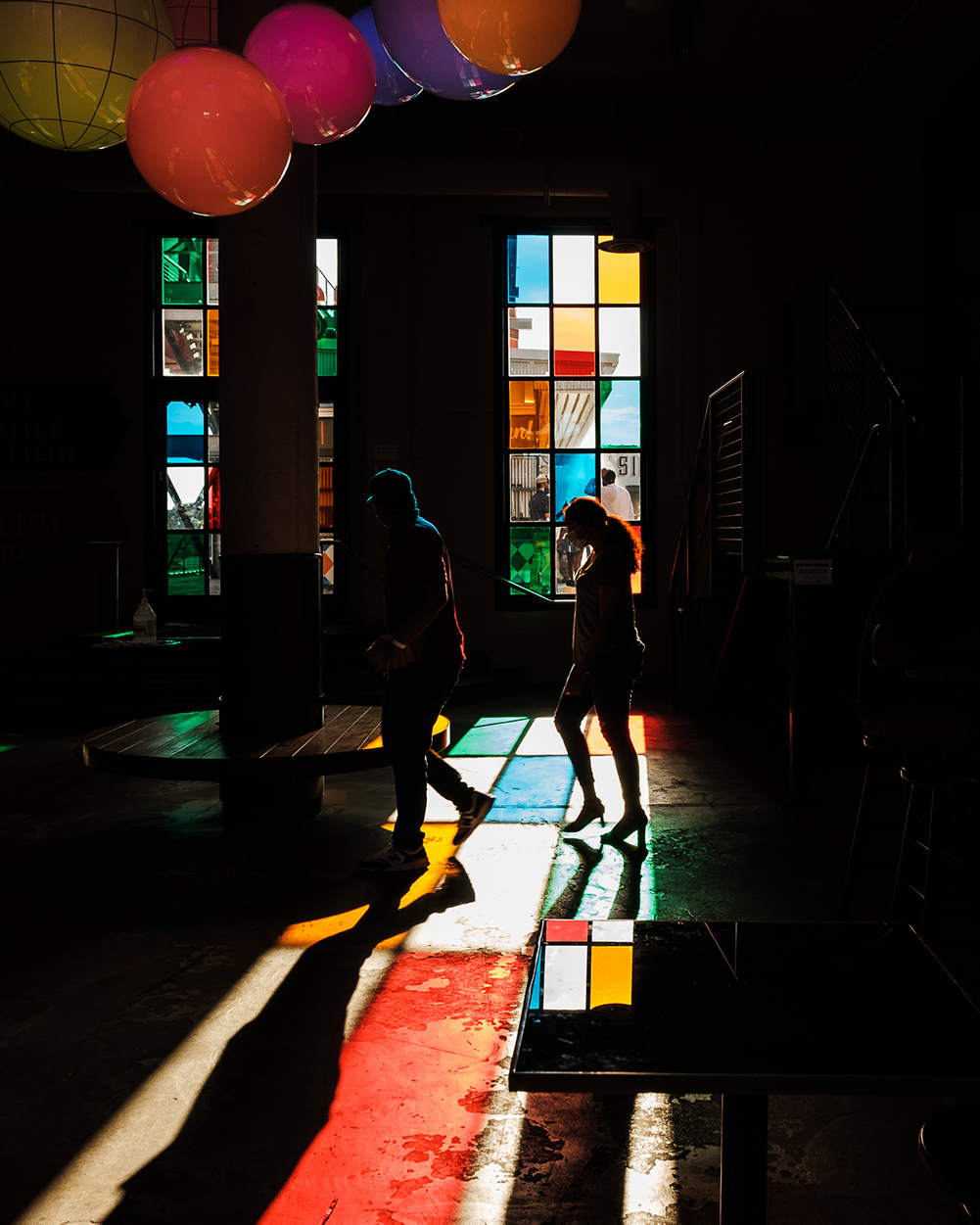 Students of Storytelling
Students of Storytelling 
Sophia Li won the Fujifilm Students of Storytelling competition for her project on spreading awareness about the role that a resilient and sustainable local food system plays in the present crisis. She did this by documenting the lives of small-scale growers affected by the COVID-19 pandemic.
Fujifilm created the contest to identify the next generation of U.S. storytellers, and to provide them with Fujifilm X Series or GFX System gear to bring their vision to life.
Rangefinder: What interests you as a storyteller? Which stories are you drawn to?
Sophia Li: As a storyteller, I am drawn to stories about how nature, culture and identity intertwine. In particular, I am interested in how the natural environments we live in shape cultural constructs—and how they impact our personal identities—across different societies.

Rf: What stories do you want to share through your work?
SL: I hope to share stories that cultivate empathy, and challenge people to look at the world around them without prejudice by allowing people to see life through the eyes of others.


Rf: Describe the evolution of your style and approach. How has it changed over time?
SL: When I first started photography in middle school, I was shooting almost exclusively wilderness and landscape scenes. Growing up in the forests of New England in a family that loves to hike, I have always been drawn to nature. There’s just something so breathtaking about being surrounded by mountains, trees and water. I wanted to be able to capture that feeling of awe in nature through my photography.
I started branching out into travel photography last year when I moved to Germany for a three-month internship. It was my first time living independently abroad, and I was consumed by wanderlust. Everything around me was novel and exciting. Exploring my surroundings through the lens of my camera, I gained insights into unfamiliar cultures and ways of life. Photography became a way to document my discoveries and adventures, and to express my curiosity for the world.
However, it wasn’t until I took a class called “Ways of Seeing: Storytelling through Photography” while studying abroad in Denmark that I truly began to learn how to weave visual narratives through photography. Before taking this course, my photography had been primarily aesthetic-focused. Taking portraits of people, especially strangers, intimidated me. The professor of the class, Charlotte de la Fuente, challenged me to think more deeply about the message I was trying to convey through my images. I became more intentional about the composition and sequencing of images in my photography projects. Additionally, I learned the importance of engaging thoughtfully with my subjects on a personal level. Now, I make sure to establish a connection with my subjects so that I can authentically portray their identities.
I am still working on developing and finding my own unique style and aesthetic. My compositions tend to be relatively simple and clean, but I have been experimenting with creating more complex images lately by adding multiple elements and layers to my photography.

Rf: What are the key things you have learned or done that have helped you advance your career since you began shooting?
SL: Even though I have been taking photos since I was little, I had never really considered myself a photographer until last year. I guess I just never thought that I was good enough or that anybody would actually care about my photos. I had this ridiculous idea that to be a photographer, you had to be this high-brow, super artsy individual. I study neuroscience in college, so everyone has always known me as a science-y person. This past year, though, I decided to step outside my comfort zone and start sharing my photography online. It was nerve-wracking at first—I would spend hours trying to decide whether or not to post a photo—but the feedback and encouragement I received were incredible. Putting myself out there in the photography community, whether through creating an Instagram account or submitting to photography contests, has opened up so many opportunities and connections for me in my career.
Rf: What is the most helpful piece of advice you’ve received and followed? Who gave it to you?
SL: One piece of advice that I live by comes from a quote by Howard Thurman: “Don’t ask yourself what the world needs. Ask yourself what makes you come alive, and go do that, because what the world needs is people who come alive.” In a society where everyone has a different opinion about what you should be doing with your life, choosing to chase your dreams can be daunting. It was only when I realized that my life is my own that I began to seriously pursue my passion for photography.
Rf: As an explorer, how have you honed skills learned through travel and street photography from around the world in telling the story of local small-scale growers?
SL: By shooting travel and street photography all over the world, I have learned to work quickly on my feet in novel and foreign environments. This adaptability has proven to be crucial in helping me tell the story of local small-scale growers, as life on farms and homesteads is in constant flux. Farmers are extremely busy, so they don’t have time for an extensive photo shoot. Animals don’t exactly know how to pose for photos. The outdoor sunlight is either too harsh or too overcast during work hours. This current project has challenged me to capture fleeting moments on the spot in unpredictable situations.
Rf: How have your studies affected your approach to photography and storytelling?
SL: As a neuroscience major in college, I rely heavily on the scientific method in my approach to storytelling. When brainstorming ideas for a photography project, I first come up with a hypothesis that I want to test. Through the process of interviewing subjects and taking photos, I gather evidence to prove (or disprove) my hypothesis. The conclusion that I draw from all of the evidence forms the backbone of the story I will tell.


Rf: Can you tell us about your submission to Fujifilm’s Students of Storytelling program? How did you come up with the project?
SL: As someone who has struggled for a long time with chronic health conditions, I first became curious about sustainable food systems and organic farming methods through the “food as medicine” movement. When COVID-19 broke out in the U.S., I saw everyone around me rushing to the supermarkets, buying up bulk items in a frenzied panic. At the same time, I was reading about how millions across the nation were suffering from food insecurity, exacerbated by the crashing economy. Meanwhile industrial farms were being forced to throw away produce after the closing of restaurants and schools left them with no buyers for more than half their crops. In short, the pandemic revealed to me the vulnerability of modern-day food systems.
After my summer internship was cancelled due to COVID-19, I decided to volunteer at local farms and homesteads in Vermont—helping with planting and growing, construction projects, food preparation and preservation—so that I could gain a deeper understanding of sustainable agriculture as a way of life. I came up with this project as a way to document these issues through photography. Through my project, I hope to spread awareness about the role that a resilient and sustainable local food system plays in the present crisis.
Rf: What works have you produced with your new Fujifilm systems?
SL: I’ve mainly been shooting for my story and project these past couple of months, so I’ve taken a lot of farm life and garden photos—plants, animals, kids.

Rf: Where do you see your work going from here?
SL: I’m honestly not 100 percent sure, but I’ve always thought about working as a documentary photographer for a conscientious travel and culture magazine. I would love to tell untold stories about people and places all over the world, specifically from the perspective of locals. I want to use photography to encourage people to be active members in their local communities as well as the larger global society.
Rf: Which brand, media outlet or agency is your ideal client? And why?
SL: One of my dream clients is National Geographic—I still have volumes of their thick, square-bound magazines with the iconic, yellow rectangular borders in my childhood bedroom. I love how National Geographic explores the beauty of people and places in a way that celebrates the simultaneous diversity and commonality of human existence. Plus, coming from a neuroscience background, I appreciate NatGeo’s focus on science and discovery. I also think independent travel magazines like Culture-ist are super cool for promoting conscientious travel in harmony with social good and holistic wellness, rather than for just touristic purposes.
Visit the official Fujifilm Students of Storytelling site for more information about the complete program. Follow @svphia.li to stay up to date with Sophia Li.





